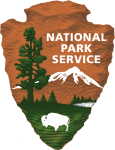
The National Park System of the United States comprises 417 official units covering more than 84 million acres. The 100-year old U.S. National Park Service (NPS) is the federal bureau within the Department of the Interior responsible for managing, protecting, and maintaining all units within the National Park system, including national parks, monuments, seashores, and other historical sites.
Global change factors such as climate are likely to affect both park resources and visitor experience1 and, as a result, the NPS’s mission to “preserve unimpaired the natural and cultural resources and values of the National Park System for the enjoyment, education, and inspiration of this and future generations.” Your team can provide insight and help strategize with the NPS as it starts its second century of stewardship of our nation’s park system.
- Tides of Change —Build a mathematical model to determine a sea level change risk rating of high, medium, or low for each of the five parks below for the next 10, 20, and 50 years.
Acadia National Park, Maine
Cape Hatteras National Seashore, North Carolina
Kenai Fjords National Park, Alaska
Olympic National Park, Washington
Padre Island National Seashore, Texas
You may use data provided below on sea level to build the model. Explain your interpretation of high, medium, and low. Could your model realistically predict those levels for the next 100 years?
- The Coast is Clear?—In addition to the phenomena listed above, the NPS is investigating the effects of all climate-related events on coastal park units. Develop a mathematical model that is capable of assigning a single climate vulnerability score to any NPS coastal unit. Your model should take into account both the likelihood and severity of climate-related events occurring in the park within the next 50 years. Some or all of the provided data may be used to assign scores to the five national park units identified in Question 1.
- Let nature take its course?—NPS works to achieve its mission with limited financial resources that may vary from year to year. In the event that costs—such as those caused by climate-related events—exceed revenues and funding, NPS must prioritize where to spend monies.
Consider incorporating visitor statistics and your vulnerability scores (and possibly other variables that may be considered priorities) to create a new model that predicts long-term changes in visitors for each park. Use this output to advise NPS where future financial resources should go.
Data Statement
Multiple government agencies collect a wealth of data on a regular basis. A portion of this data has been compiled and provided. You may choose none, some, or all of this data and/or any additional data sources you may identify while working on this problem. Be sure to identify all resources used.
- This spreadsheet contains data that might be used for Question 1.
- The first tab has some useful definitions and references.
- The second tab has the mean sea level trend values for a minimum of 30 years worth of data for the five coastal NPS units of interest.
- The third tab has monthly values from 1997 to 2016 for the five coastal NPS units of interest.
- This spreadsheet contains data that might be used for Question 2.
- The first tab contains the definition of heat index and references.
- There is one tab each for four of the five coastal NPS units of interest; no information is available for Kenai Fjords National Park.
- Average, maximum, and minimum monthly heat index values are given from 1991 to 2011. Note that some months have missing data.
- This spreadsheet contains data that might be used for Question 2.
- The first tab has some useful definitions and references.
- There is one tab for each of the five coastal NPS units of interest.
- Hurricane event information is given from 1995 to 2015.
- This spreadsheet contains data that might be used for Question 2.
- This file contains information about wildfire episodes for four of the five coastal NPS units of interest; no information is available for Kenai Fjords National Park.
- The first tab has some useful definitions and references.
- There is one tab for each of the four coastal NPS units with available wildfire information.
- Wildfire data is given from 1997 to 2016.
- This spreadsheet contains data that might be used for Question 2.
- The first tab has some useful definitions and references.
- There is one tab for each of the five coastal NPS units of interest.
- Monthly temperature data is given from 1997 to 2014.
- This spreadsheet contains data that might be used for Question 2.
- The first tab has some useful definitions and references.
- There is one tab for each of the five coastal NPS units of interest.
- Average, maximum, and minimum monthly air quality index values are given from 1995 to 2015.
- This spreadsheet contains data that might be used for Question 3.
- The first tab has some useful definitions and references.
- There is one tab for each of the five coastal NPS units of interest.
- Monthly and total annual number of visitors are given from 1979 to 2016.
Links you may find useful:
- https://www.nps.gov/subjects/socialscience/vse.htm
- http://journals.plos.org/plosone/article?id=10.1371/journal.pone.0128226
- https://www.nature.nps.gov/ParkScience/index.cfm?ArticleID=624&Page=1
- https://www.epa.gov/climatechange
- https://www.ncdc.noaa.gov/climate-information/extreme-events
- National Park Service (NPS). National Park Service Climate Change Response Strategy. Fort Collins, CO: National Park Service Climate Change Response Program; 2010.
Problem author: Dr. Neil Nicholson, North Central College
Reference and other links included on this page were current and valid at time of original posting; if they are no longer valid or live please look for similar or updated links in context with the referenced topic.





